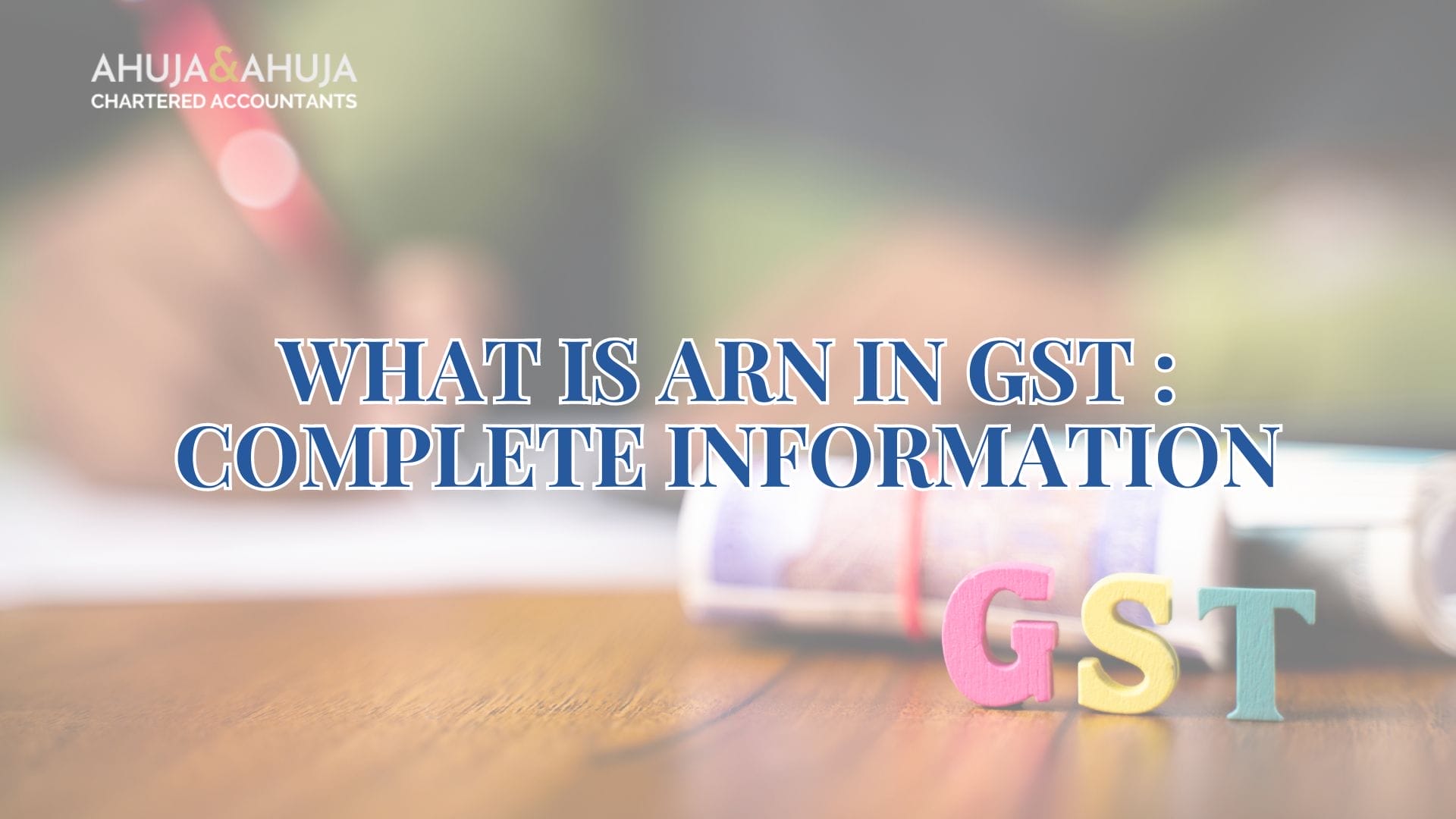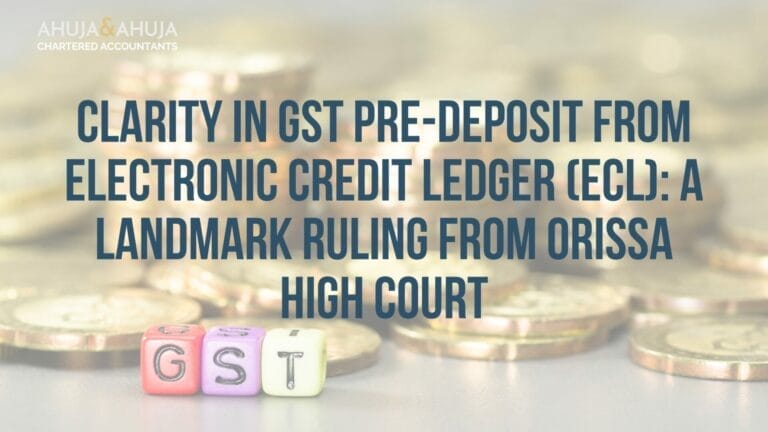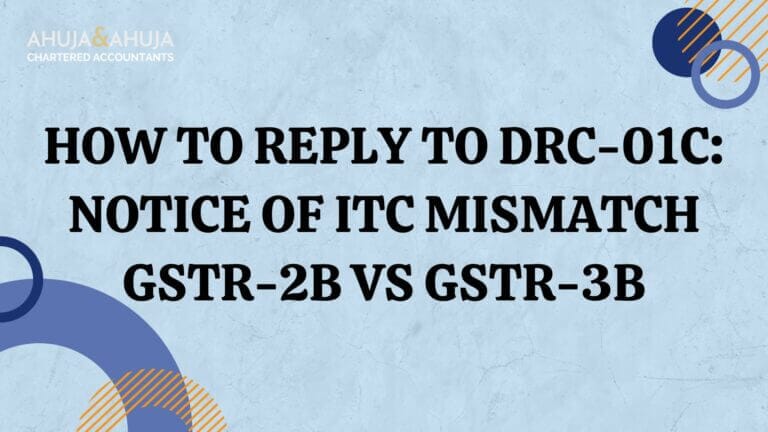What is ARN in GST : Complete Information
As the Indian economy grew more complex, it became pivotal to streamline the taxation system for goods and services. Reflecting the principle of “one nation, one tax,” a revolutionary step was taken through the introduction of the Goods and Services Tax (GST). The GST is a comprehensive tax levied on the supply of goods and services, which efficiently replaced a multitude of previous indirect taxes in India. Be it registration, return filing, refunds, or tax payments, everything related to GST is performed online on the GST portal. As a consequence, the Application Reference Number (ARN) plays a critical role in these online functionalities.
The ARN, a crucial part of the GST system, stands for Application Reference Number. It gets automatically generated upon the submission of a GST registration application on the GST Portal, irrespective of whether the application pertains to the registration of a normal taxpayer, a non-resident taxable person, or an ISD (Input Service Distributor). The ARN is not only unique to every application but also furnishable as a valid proof of registration application made, until the GSTIN (Goods and Services Tax Identification Number) gets issued.
The subsequent parts of this article will delve deeper into what the ARN leverages in the GST system, its importance, and how to understand the GST ARN Status. Stay tuned with us to demystify the complex processes and gain a firm understanding of the GST services for your business.
Deep dive into the ARN
A. Explanation of ARN in simple terms:
The Application Reference Number (ARN) is a unique 15-digit alphanumeric code assigned to each GST registration application. It serves as a reference and identification number throughout the application process until the issuance of the GSTIN. Think of it as a temporary ID that helps you track the progress of your registration application on the GST Portal.
B. How is the ARN generated?
The ARN is automatically generated by the GST Portal upon the submission of a GST registration application. Once the application is successfully filed, the system assigns a unique ARN to it. This number acts as a reference for any subsequent inquiries or clarifications related to the application.
C. Details of the ARN format:
Understanding the structure of the ARN can help in identifying the information it contains. Here is an overview of the ARN format:
- The ARN is a 15-digit alphanumeric code.
- The first two characters are alphabets and represent the code for the jurisdiction.
- The next two digits represent the state code.
- The following four digits indicate the month and year of the application filing.
- The subsequent six digits are a system-generated unique identification number.
- The last digit is the checksum digit, which ensures the accuracy of the ARN.
Knowing the format of the ARN can aid in recognizing its authenticity and validity.
Importance of ARN
A. Use of ARN in business transactions:
The ARN plays a significant role in facilitating smooth business transactions during the registration process. When you apply for GST registration, you receive an ARN code, which serves as a valid ID until you receive your GSTIN. This allows you to carry out business activities without disruptions, ensuring continued compliance with GST regulations.
B. Significance of ARN in determining a vendor’s authenticity:
The ARN number holds value in verifying the authenticity of vendors. It allows you to check and validate their GST registration status on the GST portal. This helps to build trust and ensures that you are dealing with registered vendors who are compliant with GST regulations.
C. Use of ARN for invoicing purposes:
One important use of the ARN is that vendors can offer GST on a bill of supply without having the GSTIN. This comes in handy in cases where GSTIN is not yet available. However, it’s important to note that once the vendor receives their GSTIN, they need to issue a new invoice with the GSTIN mentioned.
D. ARN as an identity for intermediaries:
ARN has broader implications beyond just GST registration. It is an identity used with fund agents, mediators, mutual fund advisors, and distributors. It serves as an assurance of the intermediary’s registration and a confirmation that there is no fraudulent activity involved.
E. ARN for brokerage identification in mutual funds:
In the case of mutual funds, the ARN helps you find the exact brokerage associated with a transaction. This can be useful for investors who want to understand the details of their investments and associated costs more accurately.
These factors demonstrate the importance of the ARN in the GST system and its relevance in various business scenarios.
Understanding GST ARN Status
The GST ARN Status provides information about the progress and current stage of your GST registration application. Here are the different types of GST ARN Number Status and their meanings:
Form Assigned to Approving Officer:
- Meaning: The GST application has been assigned to an Officer for processing.
- Action: The application is pending on the Government side and awaiting review from the officer.
Pending for Clarification:
- Meaning: The processing officer has requested clarification on certain details provided in the GST registration application.
- Action: As an applicant, you should submit the necessary clarifications through the GST Portal as soon as possible to proceed with the application.
Clarification Filed – Pending for Order:
- Meaning: The applicant has responded to the concerns raised by the GST Officer and provided the necessary clarifications.
- Action: At this stage, an order on the application can be expected soon.
Clarification NOT Filed – Pending for Order:
- Meaning: The applicant has not filed the requested clarifications within the given time frame.
- Action: In such cases, it is likely that an order rejecting the GST registration application will be passed by the GST Officer. Reapplication would be necessary if a GST registration is still required.
Application Approved:
- Meaning: The GST registration application has been approved by the GST Officer.
- Action: You will receive the GSTIN and the GST registration certificate shortly after the approval.
Application Rejected:
- Meaning: The GST registration application has been rejected by the GST Officer.
- Action: If you still require a GST registration, you will have to apply again with the necessary modifications.
These different GST ARN statuses help applicants track their applications’ progress and understand the next steps in the process.
FAQs
Here are some commonly asked questions about the Application Reference Number (ARN) in the Goods and Services Tax (GST) system:
How long does it take to receive the ARN after submitting a GST registration application?
The ARN is generated automatically upon submission of the application on the GST Portal. It is usually available instantly or within a short span of time.
Can I use the ARN for business transactions before receiving the GSTIN?
Yes, the ARN serves as a valid ID until the GSTIN is issued. You can use it for business transactions without any interruptions.
Is the ARN unique for each GST registration application?
Yes, the ARN is a unique identification number assigned to each GST registration application. It helps in tracking the progress of the application.
Can I track the status of my GST registration application using the ARN?
Yes, you can use the ARN to track the status of your application on the GST Portal. It provides information about the stage of processing and any clarifications required.
What should I do if the ARN status shows that clarification is pending?
If clarification is requested by the GST officer, it is important to submit the necessary clarifications through the GST Portal promptly. Delay in providing clarifications may lead to rejection of the application.
Can the ARN be used as proof of GST registration?
The ARN is generated upon application submission and serves as proof that you have applied for GST registration. However, the GSTIN is the final proof of registration.
Disclaimer
The materials provided herein are solely for educational and informational purposes. No attorney/professional-client relationship is created when you access or use the site or the materials. The information presented on this site does not constitute legal or professional advice and should not be relied upon for such purposes or used as a substitute for professional or legal advice.







